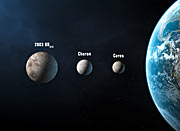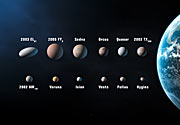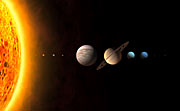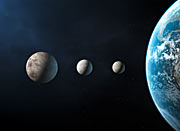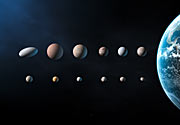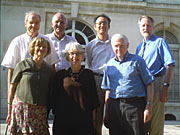- News
- Science
- Scientific Bodies
- Divisions
- Commissions
- Commission A1 Structure
- Commission A2 Structure
- Commission A3 Structure
- Commission A4 Structure
- Commission B1 Structure
- Commission B2 Structure
- Commission B3 Structure
- Commission B4 Structure
- Commission B5 Structure
- Commission B6 Structure
- Commission B7 Structure
- Commission C1 Structure
- Commission C2 Structure
- Commission C3 Structure
- Commission C4 Structure
- Commission D1 Structure
- Commission E1 Structure
- Commission E2 Structure
- Commission E3 Structure
- Commission E4 Structure
- Commission F1 Structure
- Commission F2 Structure
- Commission F3 Structure
- Commission F4 Structure
- Commission G1 Structure
- Commission G2 Structure
- Commission G3 Structure
- Commission G4 Structure
- Commission G5 Structure
- Commission H1 Structure
- Commission H2 Structure
- Commission H3 Structure
- Commission H4 Structure
- Commission J1 Structure
- Commission J2 Structure
- Commission J3 Structure
- Commission X1 Structure
- Commission X2 Structure
- Past Commission Organising Committees
- Working Groups
- Centres
- Scientific Meetings
- Rules & Guidelines
- General Assemblies
- Meeting Proposals
- Future IAU Meetings
- General Assemblies
- EC Meetings
- Officers' Meetings
- Regional Meetings
- Symposia
- Focus Meetings
- Institutional Meetings
- IAU Offices Meetings
- IAU-Sponsored Meetings
- Letters of Intent submitted for 2024
- Letters of Intent submitted for 2023
- Letters of Intent submitted for 2022
- Letters of Intent submitted for 2021
- Letters of Intent submitted for 2020
- Past IAU Meetings
- Templates
- Other Meetings
- Grants & Prizes
- Scientific Bodies
- Publications
- IAU Publications
- IAU Strategic Plan
- Symposia
- WGSBN Bulletins
- Regional Meetings
- Information Bulletins/Catalyst
- E-Newsletters
- Focus Meetings
- Transactions A
- Transactions B
- Related Publications
- GA Newspapers
- CAPjournal
- IAU Books
- Brochures
- IAU Offices
- WG Reports
- Commission Reports
- Division Reports
- Past IAU Publications
- Rules, Guidelines and Instructions for Proceedings
- Publishers
- IAU Publications
- Administration
- About the IAU
- Statutes & Rules
- IAU Policies
- IAU Executive Bodies
- IAU Secretariat
- Resolutions
- Members Administration
- Administrative Dates & Deadlines
- International Organisations Relations
- Donate to the IAU
- Training in Astronomy
- Astronomy for Education
- Astronomy for Development
- Astronomy for the Public
- Office for Astronomy Outreach
- FAQ
- Themes
- Satellite Constellations
- Astronomy in Everyday Life
- How to Report a Discovery
- Careers in Astronomy
- Defining our Place in the Cosmos
- The Constellations
- Light Pollution
- Measuring the Universe
- Near Earth Objects
- How to Participate in Astronomy Research
- Naming of Astronomical Objects
- Naming of Exoplanets
- Buying Star Names
- Naming Stars
- Pluto and the Solar System
- IAU Member Statistics
- Our Moon: the Moon
- Meteors & Meteorites: The IAU Definitions of Meteor Terms
- UNESCO-IAU Portal to the Heritage of Astronomy
- Social Media
- Past Events
- Call for Online Resources
- Astronomy@Home Awards
- Contact
iau0601 — Press Release
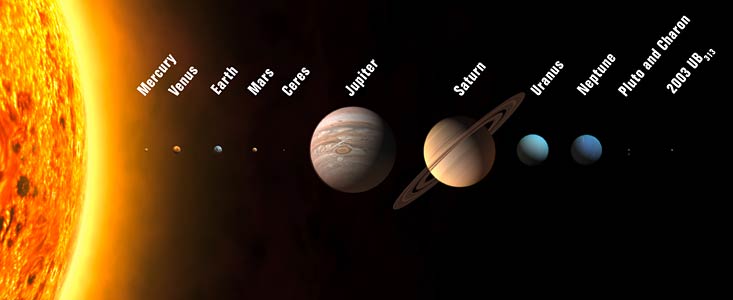
16 August 2006, Prague
The IAU draft definition of "planet" and "plutons"
The world's astronomers, under the auspices of the International Astronomical Union (IAU), have concluded two years of work defining the difference between "planets" and the smaller "solar system bodies" such as comets and asteroids. If the definition is approved by the astronomers gathered 14-25 August 2006 at the IAU General Assembly in Prague, our Solar System will include 12 planets, with more to come: eight classical planets that dominate the system, three planets in a new and growing category of "plutons" - Pluto-like objects - and Ceres. Pluto remains a planet and is the prototype for the new category of "plutons."
With the advent of powerful new telescopes on the ground and in space, planetary astronomy has gone though an exciting development over the past decade. For thousands of years very little was known about the planets other than they were objects that moved in the sky with respect to the background of fixed stars. In fact the word "planet" comes from the Greek word for "wanderer". But today hosts of newly discovered large objects in the outer regions of our Solar System present a challenge to our historically based definition of a "planet".
At first glance one should think that it is easy to define what a planet is - a large and round body. On second thought difficulties arise, as one could ask "where is the lower limit?" - how large, and how round should an asteroid be before it becomes a planet - as well as "where is the upper limit?" - how large can a planet be before it becomes a brown dwarf or a star?
IAU President Ron Ekers explains the rational behind a planet definition: "Modern science provides much more knowledge than the simple fact that objects orbiting the Sun appear to move with respect to the background of fixed stars. For example, recent new discoveries have been made of objects in the outer regions of our Solar System that have sizes comparable to and larger than Pluto. These discoveries have rightfully called into question whether or not they should be considered as new 'planets.' "
The International Astronomical Union has been the arbiter of planetary and satellite nomenclature since its inception in 1919. The world's astronomers, under the auspices of the IAU, have had official deliberations on a new definition for the word "planet" for nearly two years. IAU's top, the so-called Executive Committee, led by Ekers, formed a Planet Definition Committee (PDC) comprised by seven persons who were astronomers, writers, and historians with broad international representation. This group of seven convened in Paris in late June and early July 2006. They culminated the two year process by reaching a unanimous consensus for a proposed new definition of the word "planet."
Owen Gingerich, the Chair of the Planet Definition Committee says: "In July we had vigorous discussions of both the scientific and the cultural/historical issues, and on the second morning several members admitted that they had not slept well, worrying that we would not be able to reach a consensus. But by the end of a long day, the miracle had happened: we had reached a unanimous agreement."
The part of "IAU Resolution 5 for GA-XXVI" that describes the planet definition, states "A planet is a celestial body that (a) has sufficient mass for its self-gravity to overcome rigid body forces so that it assumes a hydrostatic equilibrium (nearly round) shape, and (b) is in orbit around a star, and is neither a star nor a satellite of a planet." Member of the Planet Definition Committee, Richard Binzel says: "Our goal was to find a scientific basis for a new definition of planet and we chose gravity as the determining factor. Nature decides whether or not an object is a planet."
According to the new draft definition, two conditions must be satisfied for an object to be called a "planet." First, the object must be in orbit around a star, while not being itself a star. Second, the object must be large enough (or more technically correct, massive enough) for its own gravity to pull it into a nearly spherical shape. The shape of objects with mass above 5 x 1020 kg and diameter greater than 800 km would normally be determined by self-gravity, but all borderline cases would have to be established by observation.
If the proposed Resolution is passed, the 12 planets in our Solar System will be Mercury, Venus, Earth, Mars, Ceres, Jupiter, Saturn, Uranus, Neptune, Pluto, Charon and 2003 UB313. The name 2003 UB313 is provisional, as a "real" name has not yet been assigned to this object. A decision and announcement of a new name are likely not to be made during the IAU General Assembly in Prague, but at a later time. The naming procedures depend on the outcome of the Resolution vote. There will most likely be more planets announced by the IAU in the future. Currently a dozen "candidate planets" are listed on IAU's "watchlist" which keeps changing as new objects are found and the physics of the existing candidates becomes better known.
The IAU draft Resolution also defines a new category of planet for official use: "pluton". Plutons are distinguished from classical planets in that they reside in orbits around the Sun that take longer than 200 years to complete (i.e. they orbit beyond Neptune). Plutons typically have orbits that are highly tilted with respect to the classical planets (technically referred to as a large orbital inclination). Plutons also typically have orbits that are far from being perfectly circular (technically referred to as having a large orbital eccentricity). All of these distinguishing characteristics for plutons are scientifically interesting in that they suggest a different origin from the classical planets.
The draft "Planet Definition" Resolution will be discussed and refined during the General Assembly and then it (plus four other Resolutions) will be presented for voting at the 2nd session of the GA 24 August between 14:00 and 17:30 CEST.
Notes
The IAU is the international astronomical organisation that brings together distinguished astronomers from all nations of the world. IAU's mission is to promote and safeguard the science of astronomy in all its aspects through international cooperation. Founded in 1919, the IAU is the world's largest professional body for astronomers. The IAU General Assembly is held every three years and is one of the largest and most diverse meetings in the astronomical community's calendar.
Science contacts (the persons below can all be reached via the IAU GA Press Office, see bottom)
Owen Gingerich
IAU Planet Definition Committee Chair
Tel: via the Press Room +420-261-177-075
Iwan Williams
President, IAU Division III Planetary Systems Sciences
Tel: via the Press Room +420-261-177-075
Ron Ekers
IAU President
Tel: via the Press Room +420-261-177-075
Catherine Cesarsky
IAU President-Elect and member of the Planet Definition Committee
Tel: via the Press Room +420-261-177-075
Richard Binzel
Member of the Planet Definition Committee
Tel: via the Press Room +420-261-177-075
Dava Sobel
Author and historian, member of the Planet Definition Committee
via the IAU Press Office
Tel: +420-261-177-075
Mike Brown
Discoverer of 2003 UB313 and a host of other planet candidates
Via Caltech Media Relations
Tel: +1-626-395-3226
E-mail: mbrown(@)caltech.edu
Links
Additional material in this release package may be found in: http://www.iau2006.org/
- Question and Answer sheet
- Committee composition
- Resolution B5 – Definition of a Planet in the Solar System (PDF file)
Contacts
Lars Lindberg Christensen
IAU Press Officer, IAU GA 2006 Press office, Meeting Room 3.2
Prague Congress Center, Czech Republic
Tel: +420-261-177-075
Cell: +49-173-3872-621
Email: lars@eso.org

